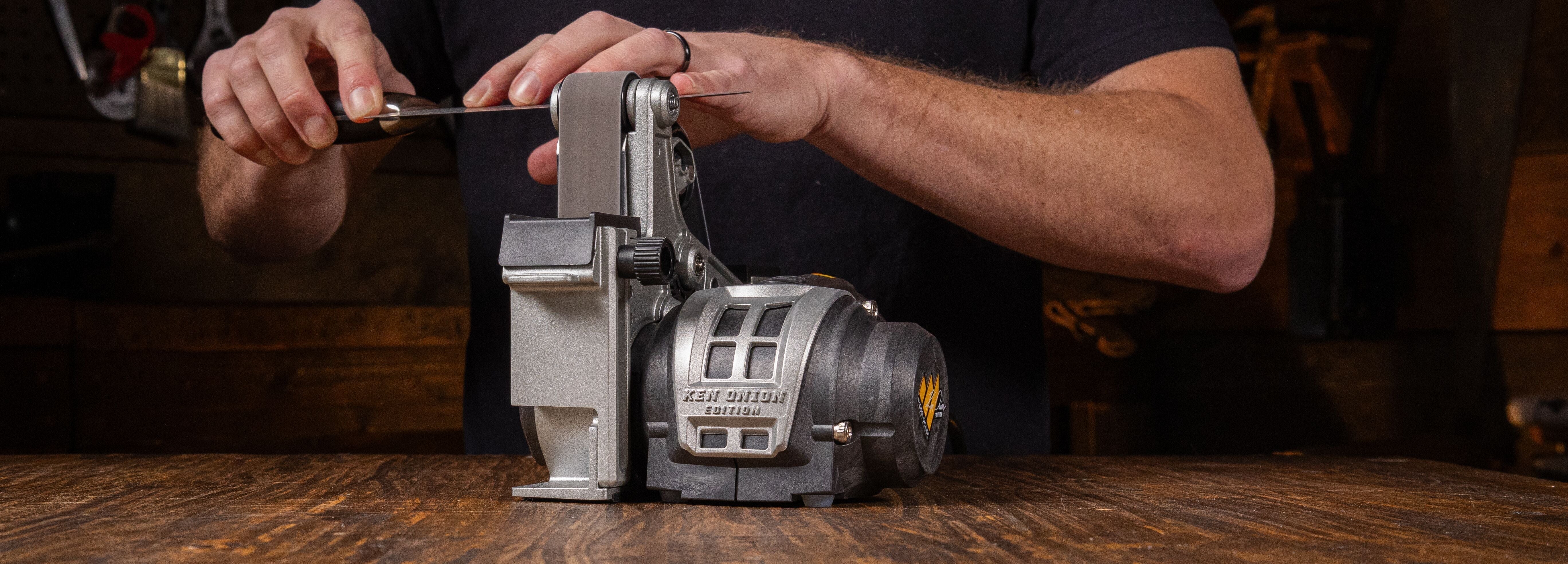The importance of raising a burr when sharpening a knife cannot be understated. To get a knife sharp, you have to raise a burr. That is worth saying twice. To get a knife sharp, you must raise a burr.
What is a burr? To understand that, let’s talk about the process of sharpening and what makes the cutting edge.
When you are sharpening a knife, your objective is to move and/or remove material from the edge bevel of the knife; what you likely refer to as the knife’s edge. The edge bevel or secondary bevel is what forms the cutting surface of a knife.
To create this final apex, the blade of the knife must be beveled from the thickness of the spine to a relatively thin final thickness, before the edge bevel is cut in. Below is a cross-sectional diagram of the primary and the edge (or secondary) bevel:

You can see that there are shoulders at the point the secondary bevel transitions to the primary bevel. When you sharpen, you must select an angle that is precisely the same, or broader, than the secondary bevel. If you do not, your sharpening device with hit the shoulders of the secondary bevel and will never touch the final edge of the knife. If/when this happens, you will not be able to produce a burr.
If you have selected an appropriate edge angle (typically, it is a safe bet on outdoor knives to use 22 – 25 degrees and 17 degrees for most kitchen knives) then your sharpening efforts will be able to yield a burr.
The burr is formed as you push the knife across the surface of your sharpening device or pull the sharpening device across your knife. As you do this, steel is moved out to the end of the edge bevel. You will be able to feel if a burr is formed by placing your finger on the side of the knife opposite the side you are sharpening and gently feeling from the spine off the edge of the knife.
“The Guru”, Steve Baker, Work Sharp Engineer says, “A good rule of thumb when working to form a burr is to count five strokes per side. Feel for a burr and then switch to the other side. Do this until you feel a consistent burr across the entire length of the edge. Once you do feel a burr, switch to the opposing side one last time and count five final strokes. It is important that you form a symmetrical edge and always counting five strokes per side keeps you from removing more on one side than the other.”
At this point, your knife is close to sharp. From here, you can work down your grit progression(s) or strop the knife to remove the burr. Once the burr is removed, the result will be a legitimately sharp edge and a more functional knife.







